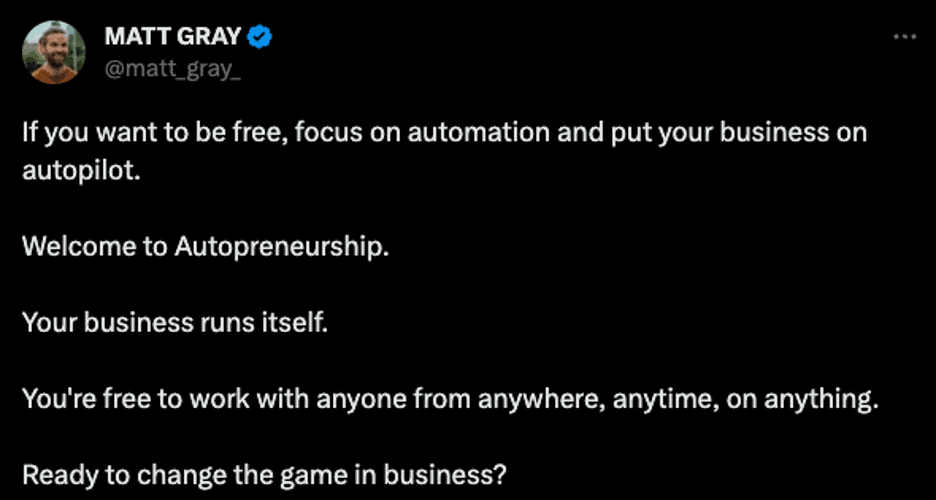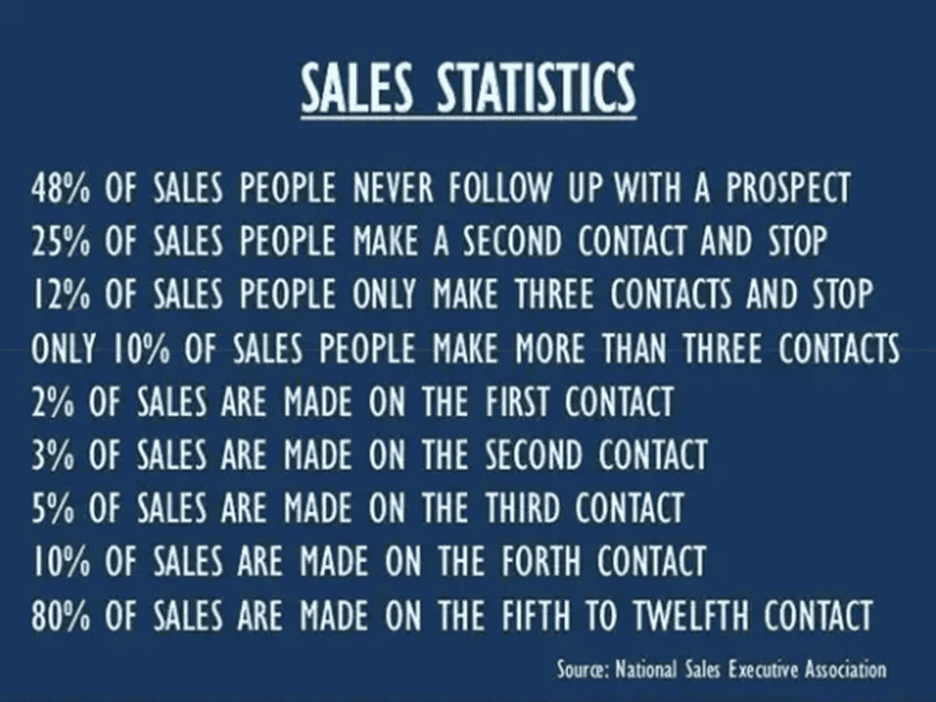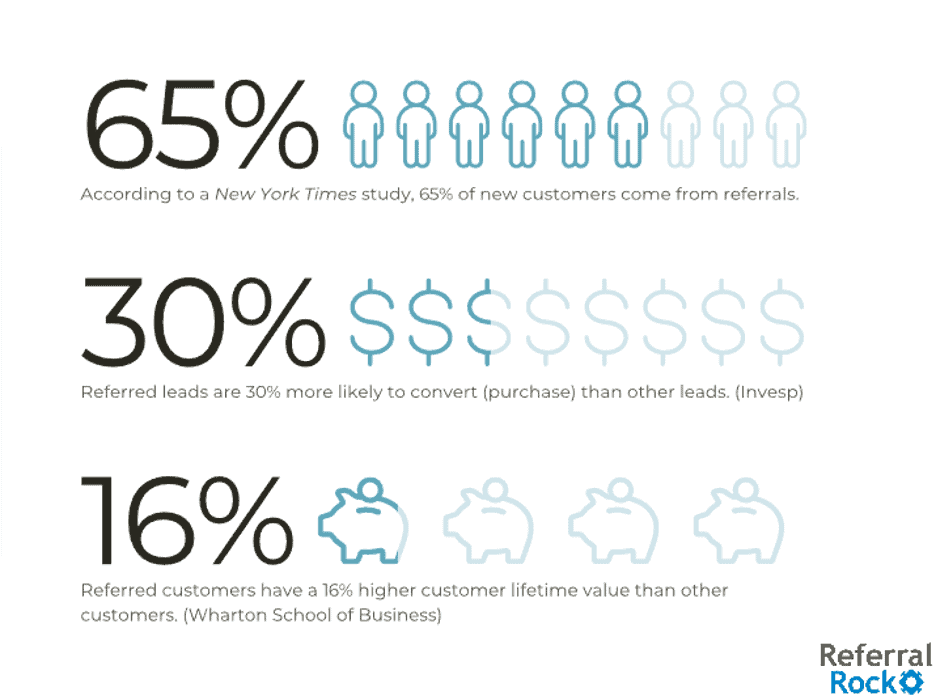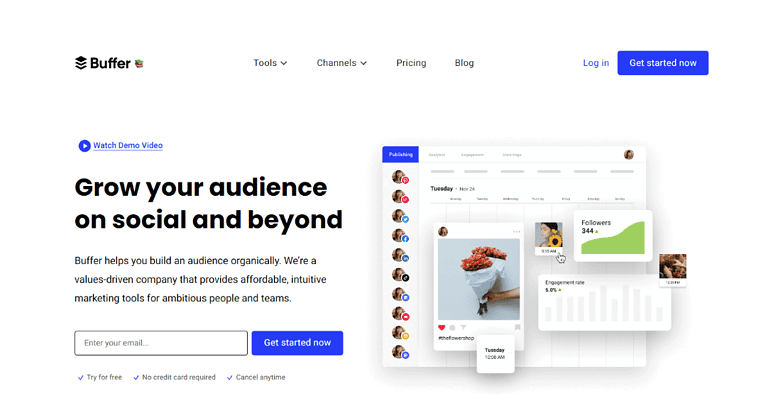31 Ways on How to Automate Your Business in 2024
Are you doing the same tedious, repetitive tasks in your business? Sending the same repetitive emails to your prospects, messages to your team, and invoices to your customers?
Keep hearing that you have to automate your business but have no idea where to start?
Well, you have come to the right place.
After doing many hours of Googling, experimenting with many automation tools, and helping many entrepreneurs with their own automations, I want to share the best ways on how to automate your business!
This isn’t just another normal method to automate repetitive work. Instead, get ready to sit back, relax, and perhaps discover some valuable tips to reclaim your time.
And, for the people who don’t want to read everything, here’s my complete list of automations:
Below are some of my best tips to automate your online business, so let’s get started.
Can you really automate your business with the right tools?
Yes, you can automate tasks in your small business with the right tools and tech stack. Automation and artificial intelligence (AI) have been powerful ways to gain control over your business and create systems that produce the same results every single time.
Since Tim Ferriss published “The 4-Hour Work Week” (book summary) in 2007, small business automation tools have come a long way in the online business world.
Not only are automations getting really popular, but they can also save you precious time. Then, you can use that reclaimed time to work on higher-level projects that will move your business and life forward.
Matt Gray, a “Systems” Influencer, sums up being an automation entrepreneur as “Autopreneurship” in this tweet:

What are the best ways to automate your business?
With the tips in this article, you can automate many parts of your online business! And so, I have divided the automations into different categories in your business.
Disclaimer: Don’t try to do everything on this list at once! You will be overwhelmed and then give up. Instead, focus on automating one area (marketing, sales, etc.), doing one automation at a time, so you can get the small wins to carry over into the other areas of your business.
Without further ado, let’s dive in and save you some time!
Marketing Automation

Marketing is critical to generating quality leads for your small business. And so, marketing automations can help you be more efficient with your lead generation.
1. Build Automated Email Campaigns
You know the feeling when you sign up for someone’s email list, the emails start rolling in, and your inbox notifications start going off! This is email automation in action.
And email may seem dead, but it’s not. Today, email automation is still a great way to keep in touch and add value to your audience. And you can use email marketing tools like ConvertKit or Active Campaign to do all the work.
First, use ConvertKit to create a pop-up box, newsletter signup form, or lead magnet to add your website. When someone visits your website and gives you their email, they will be subscribed to your email list without having to input emails one by one.
After signing up, you can set up targeted messages and send regular newsletters to your website visitors without sending emails one at a time. Over time, test and improve your email marketing campaigns to get more leads.
2. Leverage AI Writing Tools for Content Creation
Creating content, primarily written content, is inevitable. Whether it is for social media, blog posts, or email newsletters, recently, there seems to be more pressure to create high-quality content in not a lot of time. So, let’s automate your content creation!
Thus, automating your writing with an AI writing tool like ChatGPT or Jasper can help you put out more words in no time! Open AI’s, ChatGPT is an AI language machine learning model that excels in recalling information, summarizing text, and responding to emails.
On the other hand, Jasper builds on ChatGPT and is great for longer-form, engaging, personalized writing. Thus, I enjoy using Jasper to create blog posts, email newsletters, product descriptions, Instagram captions, and more.
3. Automate Image Generation Using AI
You can take it one step further and harness the power of marketing automation and AI to help you generate personalized images for your brand, website, or social media. Gone are the days of hiring a graphic designer for a custom image.
Open AI has a dedicated AI image generation tool called DALL-E, which can create a variety of images, from animals to objects, all based on inputting a text description.
Two other fantastic tools are Midjourney and Jasper Art (complement to Jasper AI), which also use text input to create personalized images.
These AI-powered image generators can help you enhance your digital marketing with unique images, leading to increased engagement and brand presence.
4. Schedule Your Social Media Using Scheduling Tools
Do you find yourself posting blog posts one at a time or forgetting to post to Instagram or LinkedIn when you want to?
Let’s be honest… managing social media is annoying and time-consuming, especially when it comes to consistently publishing content.
Luckily, several social media marketing automation tools, like Hootsuite and Buffer, are available to schedule your content to post to social media platforms ahead of time.
These tools allow you to plan out your content, choose the date and time you want it to go live, move posts around easily on a timeline, and even post the same image and caption to multiple platforms at once.
Using these social media marketing tools will save time and ensure that you are not forgotten. Your posts will be pushed out regularly so you stay engaged and can keep adding value to your audience.
5. Automate Text Message (SMS) Marketing
Have you ever thought about marketing to your potential customer over texts? Yes, they can be annoying, but they can be an effective way to reach your people.
And the good news is there are SMS marketing automation tools for texting similar to email marketing. You can use tools like Twilio and EZ Texting to schedule messages to go out at a specific time and date.
For example, send out a text message automatically to remind customers of an upcoming sale or to thank them for their purchase.
6. Repurpose Your Content
Have you ever watched an influencer’s Instagram Reel and, later in the day, watched a YouTube video to find that the Reel was clipped from that video?
This is repurposing in action, and there are tools to automate this too. Repurposing tools like Repurpose.io can save you a considerable amount of time by enabling you to convert existing content into new forms with just a few clicks.
With these repurposing tools, you can create one piece of quality content and then produce a variety of content quickly and easily to be pushed out to multiple channels.
For example, you can easily transform a YouTube video into a podcast, Instagram Reels, and blog post.
Sales Automation

Now that you have qualified leads, sales is all about converting them into customers. And so, we can add sales automation to improve your conversions.
7. Regularly Keep in Touch with Prospects & Clients
It’s one thing to find prospects, but keeping them engaged with your brand can be another battle. A CRM (customer relationship management) or client management tool can be helpful for those using an outbound sales strategy.
CRM automation helps stay in touch with potential and current clients regularly. You can easily store customer information and visualize your sales pipeline.
Your leads can be scored by how likely they are to buy. Then you can target them with follow-up emails, newsletters, or personalized messages based on the lead scoring.
One of my favorite CRM options for online business owners is HubSpot (HubSpot Review), which has a range of business automation features and even integrates with your website. PipeDrive (PipeDrive Review) is another popular budget-friendly option with a simple user interface.
With an automated system and a consistent approach to lead nurturing, you can strengthen your relationship with prospects and clients alike.
8. Automate Your Sales Funnel
Yes, building a sales funnel is essential to funnel the right customer and grow your revenue. But managing that funnel can be annoying.
Yes, you can automate your sales process, too, by using a webinar or funnel builder to move leads through your sales funnel.
You can create a funnel using a webinar tool like LiveStorm or Zoom. Not only does a webinar allow you to engage with potential customers, but it also gives you the chance to showcase your expertise, deliver immense amounts of value, and then pitch at the end.
Another option is using a funnel builder, like the well-known ClickFunnels, to guide your audience through a series of videos and sales pages to pitch your product.
9. Trigger Internal Notifications to Your Sales Team
Do you find yourself poking your sales team to take the same actions as a business owner? Reach out to this prospect, write this email, schedule another call, and so on…
Your time is valuable, and CRM automation can automate reminders and notifications to a specific team member, so they can take action after crucial events.
It may seem too much, but simple messages regarding a prospect’s or client’s status help everyone stay on the same page and ensure no details are overlooked.
10. Automate Appointment Scheduling
Do you hate the back-and-forth of emailing to set up a 30-minute discovery or sales call? No more of the “Does this time on this day work for you.”
Instead, use a calendar scheduling tool, such as Calendly or Acuity, to make it easy to have prospects and clients schedule time on your calendar. With a simple link, they can view when you are free and book directly on your calendar.
Further, you can integrate these automation tools with Zoom, Google Meet, or Microsoft Teams and set up reminder emails so no one forgets to show up.
11. Automate Lead Follow-Up
Many of us are terrible with follow-up as here are some statistics:

When it comes to leads, it is about 45% of us that do not follow up with the prospect. And sales are made in persistent one-to-one interactions after presenting an offer.
But, having to do the follow-up (phone calls, texts, emails, etc.) with every lead can take up a lot of time and can be draining.
That is where a CRM, like HubSpot (HubSpot Review) or PipeDrive (PipeDrive Review), comes in handy. The best CRMs hook up to your email, phone number, and more to automate the lead follow-up process.
Gone are the days of remembering to follow up. Instead, create automated messages or follow-up reminders and decide the date and time for follow-up, ensuring that no one falls through the cracks.
12. Calculate Pricing Quotes Quickly
Do you have a service that varies depending on the size of the work, but it requires a calculator to figure out what to charge?
For example, maybe you need to provide a quote to clean a home that varies in terms of rooms, bathrooms, and dirtiness. Or you need a quote to cater a party that depends on the type of food, number of guests, and preparation required.
Some CRMs, like HubSpot (HubSpot Review), have configure, price, and quote (CPQ) automation tools built right in to help you quickly calculate quotes for a complex product or service.
Within HubSpot (HubSpot Review), you can create templates, configure pricing, and generate quotes. Once automated, you can create an accurate quote within a few clicks and respond immediately to your customers.
13. Generate Proposals, Contracts, and Invoices in a Few Clicks
Do you manually write up proposals and contracts for each potential customer? That process can be a bit annoying and can be prone to error.
However, there are some great CRM automation tools that help you create templates for proposals, contracts, and invoices.
For example, my favorite is HoneyBook, a simple CRM platform that helps you collect essential customer information, insert it directly into a proposal and contract template, and send it via email for easy signature and payment.
For a simpler solution, you can use something like PandaDoc to upload documents, prepare contracts, and get signatures in a timely manner.
Fulfillment Automation

Without a fantastic product or service that your customers want, you don’t have a business.
Fulfillment’s role is to deliver a quality product or service and turn your customers into raving fans. The good news is that we can automate parts of your fulfillment so you continually improve the service you provide.
14. Onboard Customers Right from the Get Go
Have you ever dealt with a company that provided excellent service when making the sale and completely dropped the ball as soon as the sale was made? Please don’t be that guy or girl.
Please, please, please, automate your onboarding and treat customers right as they trust you with their hard-earned money. And with the right CRM tool, you can set up an automated onboarding process using an email sequence.
In ConvertKit or HoneyBook, you can set up onboarding sequences, so as soon as someone clicks buy, they have access to your digital product, are enrolled in your course, or know the next steps to get started with your service.
Having a proper onboarding will set you apart and will not be forgotten.
15. Provide Amazing Customer Support
Sometimes, your customers need your help to troubleshoot or use your product better. And keeping you happy and satisfied is vital to your success.
Fortunately, many customer support automation tools are available to replicate the knowledge in your brain and make it available to your customers.
You can use Notion’s AI tool to read your team’s knowledge base and provide answers to common customer questions. You can import tickets and requests to help build Notion’s database, pinpoint the most common issues, and improve resolution in the future.
With an AI Chatbot, you can integrate chatbots on your website, handle basic inquiries efficiently, and relay emails to support answering more complicated inquiries.
These tools can streamline your customer support process, which will help you better provide value and keep customers coming back.
16. Manage Your Inventory Without Thinking About It
One of my best friends is in the e-commerce business, and he told me how tedious it was to keep track of stock levels for his products.
Did I have an automation for him. I introduced him to inventory management software, so he could keep track of and manage his inventory.
And the best part is you can set the parameters for reordering, so when the product stock drops below a specific threshold, the system will automatically reorder products to ensure that you are always in stock and customers can get the products they want.
Not only does this increase customer satisfaction, but it also maximizes revenue by minimizing the lost sales due to items being out-of-stock.
17. Send Surveys to Gauge Customer Satisfaction
If you want to improve your product or service, you need to get customer feedback.
You can get valuable insights on your onboarding, product delivery, or customer support. And this, too, can be automated using simple form builders or a survey app.
For a simple solution, you can create a survey in minutes using Google Forms or Microsoft Forms and connect it to Google Sheets or Excel to analyze the existing customer data. For dedicated survey automation software, check out SurveyMonkey.
After building the survey, you can set up automations to send the survey to your customers after a significant event like onboarding, product delivery, or customer support.
18. Ask for Testimonials and Incentivize Referrals
You have delivered a fantastic product or service but simply let the customer go without asking for anything in return.
Instead, this is an excellent opportunity to ask for a referral, as some of these statistics may surprise you:

Yes, your best customers are your biggest fans and want to talk about you. Not only will they tell everyone you know, but you can also use their experience as testimonial content for your website or social media to help your marketing efforts.
How do you automate this? Simply set up a reminder in your CRM to personally reach out to your customer for the ask. Or, send them an automated email to ask for referrals or testimonials.
Finance Automation

And without your marketing, sales, and fulfillment working together to be profitable, you really don’t have a business. Thus, finance is critical to your company, and automations can help you maximize revenue and cut expenses.
19. Setup Accounting and Bookkeeping
Simply, tracking your financials can be a handful. And I know many of you use those crusty spreadsheets.
Please get yourself a proper accounting tool. I personally use QuickBooks Online for my business, and it helps me streamline my finances.
QuickBooks has a user-friendly interface and automated process to easily record and categorize transactions, generate financial statements, and even sync your bank statements.
Plus, I love that Quickbooks Online integrates with other automation tools, making it easy to stay on top of my finances and manage my business.
20. Automate Your Expenses, Savings, and Investments
Scared to talk about money?
Yes, you may make really good money, but many of us don’t know how to manage our finances, let alone discuss money in day-to-day conversations.
Luckily, Ramit Sethi, a personal finance expert and author of “I Will Teach You to Be Rich,” provides valuable insights into how you can automate your finances.
Automation involves setting up systems that automatically manage your finances and move money between bank accounts. This includes automating the following:
- Income: Withdraw a percentage of your revenue from your business bank account when cash is collected from clients.
- Expenses: Set up bill pay or autopay so you never have to worry about loan or credit card payments.
- Savings: Withdraw a percentage of your income from your checking account every time you get paid.
- Investments: Invest a percentage of your income into retirement and investment accounts, so your money can make money.
By applying Ramit’s wisdom on finance automation, you will automatically pay yourself first, never forget a bill, and make better financial decisions.
21. Manage Your Accounts Receivable (AR) So You Get Paid
Two of the most critical financial metrics to track are AR and AP, as these numbers determine your cash flow:
- Accounts Receivable (AR): The money you are owed by others.
- Accounts Payable (AP): The money you owe to others.
Let’s start with AR. And keeping track of it can be frustrating as some people are reluctant to pay you and need many reminders to do so.
Fortunately, there is AR automation software available to help manage cash flow and stay on top of invoices.
My favorite tool, Chaser, helps you automate tasks like invoice reminders, payment tracking, and follow-up emails. It is so annoying to non-payers
22. Automate Your Accounts Payable (AP) So You Can Manage Payments
The other side of the equation is AP, and there are even dedicated tools to track it.
My favorite is Stampli, an AP automation software that helps you, the small business owner, stay on top of supplier payments, invoice processing, and tax compliance.
I especially like the fact that Tipalti helps me manage my vendors and suppliers with seamless onboarding, management, and payments.
23. Automate Your Payroll
If you lead a small team, you have to stay on top of payments, so no one enjoys waiting for their paycheck!
However, the good news is that accounting tools such as Gusto and Quickbooks now offer automation features that make paying your people easy.
With Gusto, for instance, you can automate everything from calculating employee taxes and paychecks to generating pay stubs and filing tax forms.
I especially like that Gusto takes the guesswork out of determining the legal and tax implications of how much to withhold for taxes depending on the state and country in which they live.
Operations Automation

Lastly, I will cover automations to improve your business operations. Operational automations support the success of the other business areas above.
24. Automate Repetitive Tasks Using Project Management Tools
If you run an online business with employees, please don’t do your task management using What’s App and Google Sheets. Trust me, I see it all the time with my clients.
Thus, you need a project or task management tool to streamline your business operations while staying organized and focused.
With these tools, you get to be the project manager! These tools not only help me manage team members and all the tasks, but they provide visibility into progress and deadlines.
Two of my favorites are ClickUp (our review) and Notion because they both have business process automation and AI built in. You can automate business processes or use one of the workflow automation templates to stop you and your employees from doing manual tasks.
For businesses looking to scale their operations, create automated workflows, and increase productivity, project management tools can be a game-changer.
25. Document Your Existing Business Processes Effortlessly
In “The E-Myth Revisited” (book summary), Michael Gerber claims that to elevate yourself as an entrepreneur, you need to create standard operating procedures (SOPs) for your people to follow to operate the business without you.
That’s where Scribe, a business process automation tool, comes in. This incredible platform allows you to work on your computer while Scribe is automating business processes in the background.
Scribe captures the business process video and pdf formats to help your team put them into practice and get work done. These SOPs can help streamline business processes, reduce mistakes, and ultimately make even the most complex of tasks more manageable.
By using Scribe to automate business processes, online business owners can save themselves hours and ensure their operations run like a well-oiled machine.
26. Record and Make Company Training Seamless
Similarly, after creating automated processes, you can take it one step further with proper training for your team.
That’s where Trainual or Scribe come in – an online training and documentation platform designed to train your team to use your standard operating procedures (SOPs).
With Trainual, you can easily create training courses that cover everything from onboarding new employees to explaining company policies.
Lastly, you can create quizzes and track progress and completion in one place.
27. Manage Your Data Automatically
We need more data! Have you heard that before?
And managing data can also be automated! Using database tools like Airtable, you can automate many tasks related to data entry, manipulation, tracking, and movement.
In AirTable, you can build automated workflows and processes to handle specific tasks, like inputting data from a form submission, sending automatic email responses, and even updating data based on user behavior.
These database tools also provide powerful tracking capabilities, allowing the owner to monitor performance and make data-driven decisions.
28. Automate Displaying Metrics on Dashboards

With the data in your database, you can take it one step further and plug it into a dashboard tool to visually view your data.
For example, you can track important metrics like website traffic, sales, and engagement through intuitive charts, graphs, and tables.
There are great dashboard tools available, like Tableau and Microsoft Power BI, that help you automate data tracking and offer valuable insights into your business’s performance.
I recommend Tableau as the simple, easy-to-use solution, while Power BI is a more powerful tool with a steeper learning curve.
With these tools, you can customize your layout and view different analytics from different sources to gain a more comprehensive understanding of your business’s performance and overall health.
29. Record Meetings Without Thinking (No Need for Notes Either)
Did you hear something valuable in your meeting and forgot to record it? And wouldn’t it be nice if someone could take notes for you?
Well, you can use meeting automation tools like Fireflies or Otter to record meetings and take notes without ever lifting a pen. These tools use automation to record the meetings and AI to transcribe your meetings with summaries and action items.
Simply connect your email or Zoom account to the automation tools. Then, all you have to do is show up to the meeting and focus on the conversation at hand.
After the meetings, I enjoyed reviewing the meeting summaries to ensure that I didn’t miss any crucial details. Also, I can use AI-generated notes to create and assign action items.
30. Hold Daily Stand Up Meetings in an Asynchronous Capacity
As an operational consultant, I recommend and implement daily huddles or stand-up meetings for all my clients with a small team.
These meetings prioritize what to focus on, hold people accountable, and foster collaboration. However, what if you could automate daily stand-ups so they are done automatically.
This is where Range.co comes in handy. This tool allows you to conduct stand-up meetings in an asynchronous format, saving time and effort while keeping everyone updated.
Range features a simple interface for creating daily stand-up prompts and requests for status updates. The platform then aggregates the updates and sends them to everyone on the team, helping to keep everyone on the same page.
31. Automate Your HR Processes
When you have a small team, you, as the entrepreneur, probably take on the human resources (HR) function.
However, there is good news! With the help of HR automation tools, business owners can streamline their HR processes.
I recently helped to implement Employment Hero, which is like having a human resources team alongside you. HR tools automate HR processes, including:
- Hiring: After creating and posting a job description, you can sort through resumes and build out a screening and interview in the hiring process.
- Employee Onboarding: Create checklists for training new employees and helping them get up to speed for the new role.
- Managing Performance: Track employee data such as performance metrics and benefits eligibility to help them grow in their role.
And best of all, all of your employees have access to the HR tool to check up-to-date information, training, and leave requests without relying on the human element.
32. Connect Multiple Apps Using Automation Apps
Many apps can integrate with one another, but sometimes you have two automation apps with no native integration.
Luckily, automation tools like Zapier and Relay exist to be that third app to connect multiple apps together, so you build business process automation between different apps.
With Zapier, you can create “Zaps” that automate repetitive tasks such as sending emails or updating spreadsheets.
Alternatively, Microsoft’s Power Automate allows you to integrate with the Microsoft ecosystem, connecting Office 365 and other apps.
With dedicated automation connector apps, the possibilities are endless for what you can optimize in your online business.
What does it mean to automate your business?
When you automate your business, you are using technology to do repetitive tasks for you to streamline your workflow.
Automation can save both time and effort, leaving you, the business owner, free to focus on what really matters: growing your business.
With endless possibilities, automation is no longer a luxury – it’s a necessity for any entrepreneur looking to have their finger on the pulse in a fast-paced digital world.
How can automation tools benefit you and your business?
Automation is getting hotter than ever! And by implementing automation in your business, you can streamline and eliminate a lot of manual, time-consuming tasks!
Surprisingly, most businesses, including big corporations, still do things manually.
There is a better way, and I hope this article inspires you to harness the power of automation, machine learning, and human creativity so you don’t get left behind!
Frequently Asked Questions (FAQs)
What is an automation?
In online business, automation has become a buzzword that is defined as follows:
“Automation is the process of using technology to simplify repetitive tasks and streamline workflow.”
How many automations should I implement at a time?
To get started, identify areas in your business that are the weakest operation. Then, set automation targets and focus on one automation at a time.
The simplest of automations done right can lead to lasting improvements. So take control of your business today and turn it into an automated system, one automation at a time!







